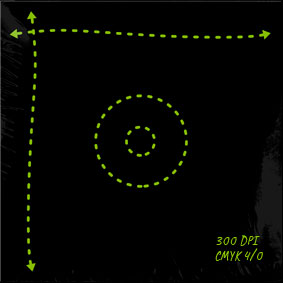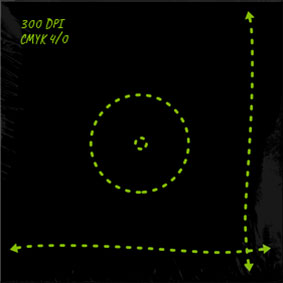
production of vinyl records
 Audio materials
Audio materials 
- Watch the maximum recommended audio recording time for one side of the disc.
- Remember that both the recording and playback conditions of vinyl records with a decreasing diameter to the center of the record deteriorate, especially for high frequencies. Therefore, place the most musically demanding and important songs primarily at the beginning of the vinyl record.
- Avoid using the SP (single, 7 ”) disc format at 33 rpm, where both recording and playback options are most limited. If there is no other solution, count on compromises.
- Don’t overdo it with psychoacoustic processors.
- Check the master recording not only subjectively (by listening), but also objectively if possible with a correlation meter (it must not be in the red field or in negative values) and a frequency spectrum analyzer (the signal must not contain unreasonably large components at the lower and especially at the upper end of the band).
- Filter out signal components that do not contribute to the subjective perception during reproduction, ie subacoustic signals below 20 Hz (preferably below 40 Hz) and components at the upper end of the acoustic band – above 16 kHz. This will prevent recording and playback problems.
- Low frequencies of the acoustic band below approx. 300 Hz must be in phase. If a noticeable loss of bass is noticeable when merging the two channels into mono, it means that the image is inappropriately processed for a vinyl record.
production of vinyl records
 Tracklist
Tracklist 
- The tracklist is an integral part of the materials. It is necessary to state the names of all songs incl. possible bonuses and hidden tracks. Furthermore, the playing times of all tracks and the total time for each side. Write any anomalies, special effects, etc. in the note.
- Always hand over the master to production only after a thorough inspection, without mechanical damage, with the enclosed accompanying documentation. Make sure that the data on the tracklist (ie the number, order, titles and times of the tracks, on both sides of the album) agree with the reality on the master, with the materials for printing labels, covers and other printed inserts. Discrepancies arising as a result of discrepancies in the documents cannot be the subject of a later complaint.
- If you require additional modifications or processing to the master (eg reordering, deleting some tracks, compiling, etc.), describe the instructions clearly in the documentation. Make sure that it is clear what is on the supplied carrier (s) and what is to be on the final product.
 Recording time
Recording time 
For ordinary music
| 12“ (LP) – 33 rpm | 19,3 min. music / side |
| 12“ (LP) – 45 rpm | 14.3 min. music / side |
| 10“ – 33 rpm | 13.6 min. music / side |
| 10“ – 45 rpm | 10.0 min. music / side |
| 7“ (SP) – 33 rpm | 6.9 min. music / side |
| 7“ (SP) – 45 rpm | 5.1 min. music / side |
For techno etc.
| 12“ (LP) – 33 rpm | 11.4 min. music / side |
| 12“ (LP) – 45 rpm | 8.4 min. music / side |
| 10“ – 33 rpm | 8.0 min. music / side |
| 10“ – 45 rpm | 5.9 min. music / side |
| 7“ (SP) – 33 rpm | 4.0 min. music / side |
| 7“ (SP) – 45 rpm | 3.0 min. music / side |

 Graphic materials for the production of vinyl records
Graphic materials for the production of vinyl records 
We have clearly prepared for you all the files you will need for the production of vinyls and their packaging




